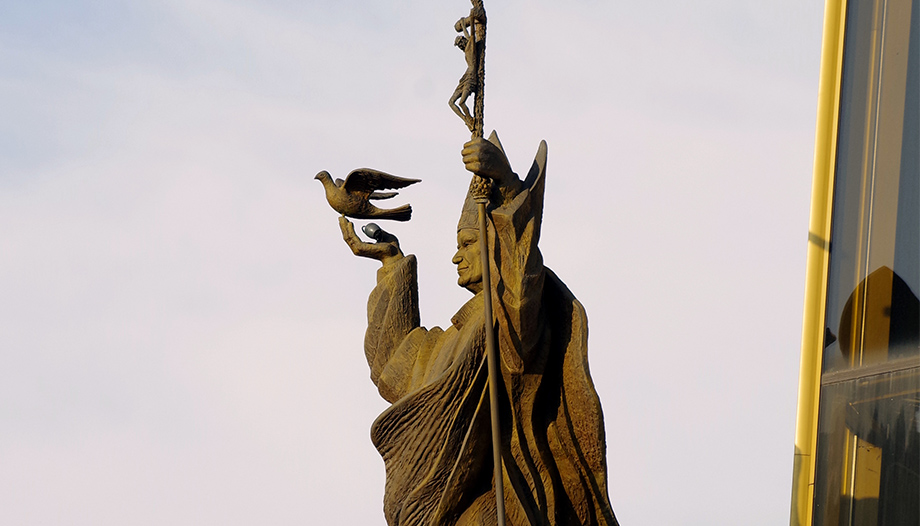During the Angelus prayer on February 21, 2021, in the midst of the pandemic, the Holy Father Francis recalled that message, which "has reached the whole world, and it is none other than the Gospel of Jesus Christ, dead and risen, who gives us the mercy of the Father.
The Pope's thoughts were directed to Poland, to the sanctuary of Płock, and in greeting in particular the Polish faithful. These were her words: "Ninety years ago, the Lord Jesus manifested himself to St. Faustina. Kowalska, entrusting to him a special message of Divine Mercy. Through St. John Paul II, that message has reached the whole world, and it is none other than the Gospel of Jesus Christ, dead and risen, who gives us the mercy of the Father. Let us open our hearts to him, saying in faith: 'Jesus, I trust in you.
Subsequently, on Sunday, April 11, as reported by OmnesPope Francis presided, for the second time, over the Mass of the Feast of Divine Mercy, in the Church of Santo Spirito in Sassia in Rome. The Holy Mass was celebrated privately at 10:30 a.m. and, at the end, from the church itself, the Pope led the prayer of the Regina Coeli from there, and not from the Library of the Apostolic Palace, as he had been doing in recent Sundays, due to health restrictions.
On this website you have comments on this Sunday's readings, written by Andrea Mardegan and Luis Herrera. And here are some keys to the devotion to the Divine Mercy, which we synthesize with the help of arguments.es and other experts.
1. When is the feast of Divine Mercy celebrated?
The second Sunday of Easter. The image represents Jesus at the moment when he appears to the disciples in the Cenacle, after the Resurrection. The moment is recorded in the Gospel reading for this Sunday.
2. Origin.
Cardinal Angelini Fiorenzo celebrated this feast for the first time on Sunday, April 11, 1999, in St. Peter's Basilica in Rome. On Sunday, April 30, 2000, St. John Paul II canonized St. Faustina Kowalska, and declared on the feast of St. Faustina Kowalska in St. Peter's Basilica, Rome. homilyIt is important that we fully embrace the message transmitted to us by the Word of God on this Second Sunday of Easter, which from now on will be called "Divine Mercy Sunday" or "Divine Mercy Sunday" throughout the Church.
3. Who spread the devotion to the Divine Mercy?
Lhe Feast of Divine Mercy comes from the message of God's mercy received by Sr. M. Faustina Kowalska (1905-1938), who calls for trust in God and an attitude of mercy towards one's neighbor. The message emphasizes that God is merciful and forgiving, and that we should do the same. It calls to proclaim and pray for Divine Mercy for the world, including the practice of new forms of worship.
Devotion to the Divine Mercy grew very rapidly after the beatification (April 18, 1993) and canonization (April 30, 2000) of Sister Faustina and also due to the pilgrimages of Pope John Paul II to Lagiewniki (1997 and 2002). In 2000, St. John Paul II canonized St. Faustina. Both Benedict XVI and Pope Francis have recommended this devotion.
What is the message of Divine Mercy?
In short, that God's Mercy is greater than our sins. To have devotion to the Divine Mercy requires a total surrender to God as Mercy, and to be merciful as He is merciful.
5. What is the Chaplet of Divine Mercy?
It is a set of prayers used as part of the devotion to the Divine Mercy. It is usually prayed at 3:00 p.m., 3:00 p.m. (the time of Jesus' death), using the beads of the holy Rosary but with different prayers.
6. What has Pope Francis said about Divine Mercy?
"It is not possible to think of Divine Mercy without the Resurrection of the Lord, because the Resurrection of the Lord, the Passover of the Lord, is the culmination of the revelation of God's Mercy, that opening to life, to eternal life. It is a supreme gift that God offers to man in Christ. Jesus came into the world precisely to reveal the merciful face of God".
7. Some resources on Divine Mercy.
You can visit or go to the Sanctuary of the Divine Mercy and Congregation of the Sisters of the Mother of God of Mercy; reading and meditating on the Gospel of this Divine Mercy Sunday; reading and meditating on the Gospel of this Divine Mercy Sunday; the Letter Misericordia et Misera', Pope Francis' apostolic letter at the conclusion of the Extraordinary Jubilee of Mercy; some of St. Josemaría Escrivá's homilies, such as 'The Heart of Christ, Peace of Christians', or the 'The Heart of Christ, Peace of Christians'. work St. Josemaría Escrivá and the devotion to Merciful Love (1927-1935)', in 'Studia et Documenta', 2009; and so on.





 Francis presides at the Mass of Divine Mercy Sunday
Francis presides at the Mass of Divine Mercy Sunday





